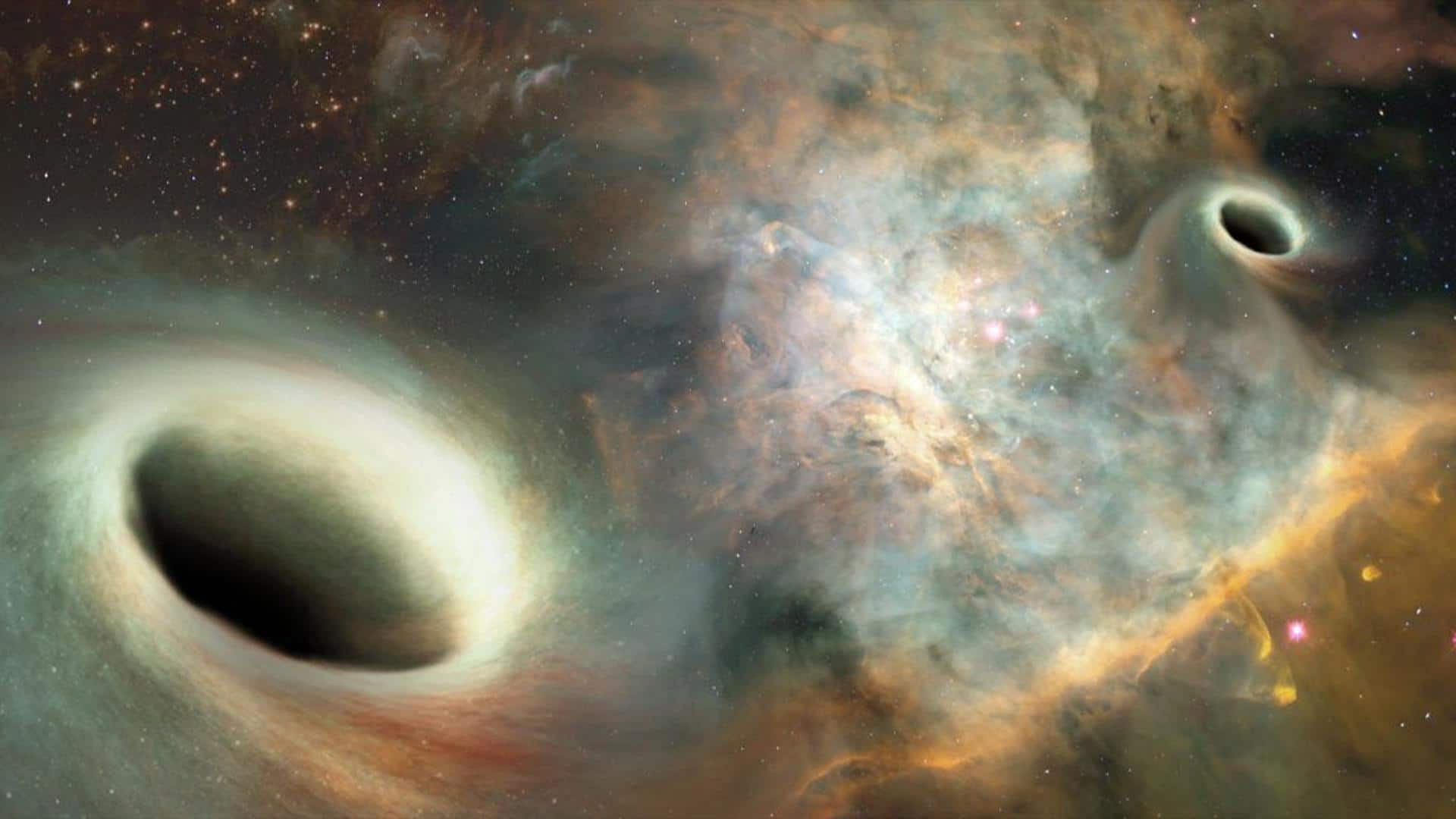
Historic image reveals two black holes orbiting each other
What's the story
Astronomers have captured a never-seen-before image of two black holes in a cosmic dance. The rare find confirms decades-old predictions about such pairs and provides visual proof of orbiting black hole pairs. The discovery is a major milestone in understanding how galaxies evolve over time. The study was published on October 9 in The Astrophysical Journal.
Observation details
Black holes locked in a 12-year dance
The black hole pair was detected through faint radio light signals collected by Earth- and space-based telescopes. They are locked in a 12-year dance, located nearly five billion light-years away. The smaller one emits a twisting jet of near-light-speed particles, while the larger one, known as blazar OJ287, weighs about 18 billion times more than our Sun.
Technological breakthrough
Network of radio telescopes helped distinguish the black holes
For years, astronomers suspected OJ287 had two black holes, but previous telescopes couldn't tell the pair apart from a single bright point. The latest image was taken using a network of radio telescopes including Russia's RadioAstron satellite. Its radio antenna extended halfway to the Moon, greatly improving resolution and enabling researchers to identify two distinct jet sources exactly where theory predicted them.
Confirmation significance
Image supports earlier evidence of black hole mergers
The new image not only confirms that OJ287 contains two orbiting black holes but also supports earlier evidence of black hole mergers detected through gravitational waves. These pairs help scientists trace how galaxies and their central black holes evolve over cosmic time. "We managed to get an image of two black holes circling each other," said lead author Mauri Valtonen from the University of Turku in Finland.
Next steps
Future imaging could reveal more details
While the findings strongly support the dual-black-hole theory, astronomers warn that overlapping jets might still complicate things. Future high-resolution imaging could reveal more details, especially the motion of the smaller black hole's jet. "When we regain the resolution of RadioAstron in future missions, we'll be able to confirm that motion," said researchers. For now, this image is as good as it gets for one of the universe's most enigmatic cosmic dances.